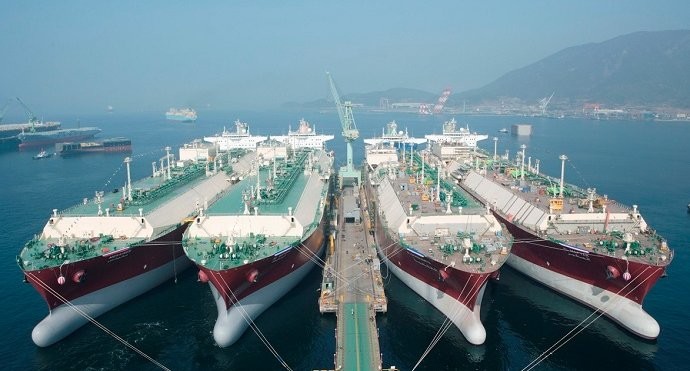
〆Primarily, the second-hand LNG vessels from European operators are being targeted.”
〆Japanese shipowners are expanding their selection of vessels for Sale & Leaseback transactions beyond dry ships.”
Japanese shipowners are conducting Sale & Leaseback (S&LB) transactions targeting second-hand LNG (Liquefied Natural Gas) vessels. Traditionally, bulk carriers have been the main vessels involved in S&LB transactions by Japanese shipowners. In the LNG vessel market, there has been a succession of new ship orders mainly by European operators and major Japanese shipping companies. For some Japanese shipowners who have not committed to new vessel investments, the S&LB of second-hand, high-priced LNG ships serves to secure funds for amortization.
S&LB refers to contracts where foreign operators, Greek shipowners, and some Japanese shipping operators sell their vessels to Japanese shipowners, who then re-charter them under bareboat charter terms. While the Japanese shipowners acquire ownership of the vessels, the management is conducted by the operators. Most contracts include Purchase Option (PO) terms.

Since 2018, during the shipping downturn, European operators faced a shortage of cash. Simultaneously, European banks triggered Loan-to-Value (LTV) clauses due to softening market conditions, demanding additional collateral from European operators and Greek shipowners. This led those in European shipping and ship owning to seek refinancing of their vessels, involving Japanese shipowners and transactions with regional banks in Japan.
The transaction structure at the time was as follows:
European operators sold their vessels, primarily bulk carriers, which still had outstanding loans from European financial institutions, to Japanese shipowners. The Japanese shipowners, benefiting from low-interest marine financing from regional banks, purchased these vessels. Ownership of the vessels transferred to the Japanese shipowners, but as these new Japanese owners often lacked experience in ship management, they entered into a bareboat charter (BBC) agreement with the European shipping companies to re-charter the vessels.
For the European shipping companies, this effectively meant they could secure cash — the sale price of the vessels — from the Japanese shipowners. They could repay the outstanding loan balances to the European banks and continue to operate the vessels as before under the re-charter arrangement with the Japanese shipowners. Moreover, the Japanese shipowners, by securing low-interest financing from Japanese regional banks, were also able to offer lower re-charter rates.

For Japanese shipowners, Sale & Leaseback (S&LB) transactions not only secure sources of depreciation funds but also provide new shipowners with an opportunity to enter the overseas ship owning business without engaging in ship management tasks. Since 2018, S&LB transactions have been invigorated through the mediation of the marine divisions of trading companies, with bulk carriers being the primary focus at that time. However, there have been several instances of S&LB transactions involving second-hand LNG vessels recently.
LNG vessels are currently under increasing demand due to Qatar’s Middle East production expansion plans, which include proposals for over 100 new builds.
Some of these new vessels will feature the largest ever tank capacity of 270,000 cubic meters with the introduction of Q-Max carriers. According to UK-based Clarksons, as of March this year, existing vessels with tank capacities between 150,000 to 180,000 cubic meters number 407, with an additional 293 on order, indicating strong supply pressure for new builds.
There are multiple S&LB arrangements being formed where European operators and some Japanese shipowners are selling and then re-chartering their LNG vessels to other Japanese shipowners.
The resale prices of second-hand LNG vessels are higher compared to bulk carriers, and given the weak yen and charter income, these transactions provide financially robust Japanese shipowners with valuable depreciation assets. With the completion of new LNG vessels primarily for Qatar projected to continue post-2025, it is expected that the S&LB market for second-hand LNG vessels, particularly those ranging from 150,000 to 180,000 cubic meters, will see an increase.
〆日本船主が中古LNG船を対象にS&LB取引を行っている。」
〆主に欧州オペレーターの中古LNG船が対象になっている。
〆日本船主はS&LBの対象船をドライ船以外に拡大している。
日本船主が中古LNG(液化天然ガス)船を対象にしたセール&リースバック(S&LB)取引を実行している。従来、日本船主のS&LB対象船はバルカーが主体だった。LNG船市場では、欧州オペレーター(運航船社)や日本の海運大手を中心に新造船の発注が相次いでいる。新造船投資に踏み切れていない一部の日本船主にとっても中古船価格の高いLNG船のS&LBは償却財源の確保に役立つ。
